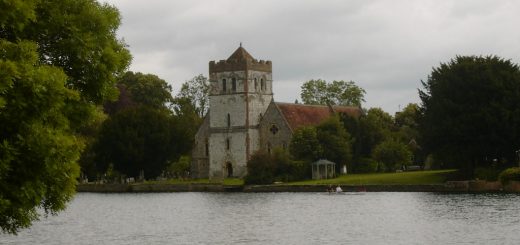Dryburgh Abbey House Hotel
The Premonstratensian Dryburgh Abbey was founded in 1150 by Hugh de Morville, Lord of Lauderdale. Now a ruin it rests within the grounds of the baronial Dryburgh Abbey Hose Hotel. The hotel itself is said to have been built on the location of an earlier house from which the haunting may have originated.
Around the 16th century a young woman living in the older house fell deeply in love with a monk. When their love affair was exposed the monk was executed by his peers for his sins. He was hanged in sight of his lover’s home. Distraught, the young woman jumped off a nearby bridge and drowned in the River Tweed.
The Grey Lady that haunts the Dryburgh Abbey Hose Hotel is associated with this tragic love story. She is said to haunt the hotel which is on the site of her former home and the bridge from which she jumped to her death.
The abbey ruins are haunted by the ghostly apparitions of monks also the sound of ghostly chanting.
At one time the family of Sir Walter Scoff owned the abbey and he is buried within the grounds. Field Marshall Earl Douglas Haig also rests there.
















Re: Dryburgh Abbey House Hotel
The following story entitled ‘Fatlips’ was published in ‘Scottish Fairy and Folk Tales (1901) by George Douglas. ‘ABOUT fifty years ago, an unfortunate female wanderer took up her residence in a dark vault, among the ruins of Dryburgh Abbey, which during the day, she never quitted. When night fell, she issued from this miserable habitation, and went to the house of Mr. Haliburton, of Newmains, or to that of Mr. Erskine, of Shielfield, two gentlemen of the neighbourhood. From their charity she obtained such necessaries as she could be prevailed upon to accept. At twelve, each night, she lighted her candle, and returned to her vault; assuring her friendly neighbours that, during her absence, her habitation was arranged by a spirit, to whom she gave the uncouth name of Fatlips, describing him as a little man, wearing heavy iron shoes, with which he trampled the clay floor of the vault, to dispel the damps. This circumstance caused her to be regarded, by the well-informed, with compassion, as deranged in her understanding; and by the vulgar, with some degree of terror. The cause of her adopting this extraordinary mode of life she would never explain. It was, however, believed to have been occasioned by a vow that, during the absence of a man to whom she was attached, she would never look upon the sun. Her lover never returned. He fell during the civil war of 1745-46, and she never more would behold the light of day.
The vault, or rather dungeon, in which this unfortunate woman lived and died, passes still by the name of the supernatural being with which its gloom was tenanted by her disturbed imagination, and few of the neighbouring peasants dare enter it by night.